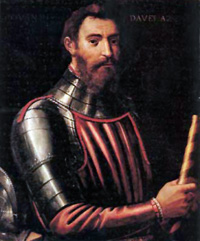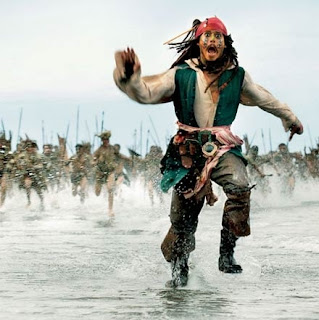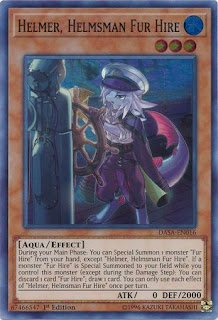Blog Post #4 "Pirate Plunder"
The goal of riches has been so deeply rooted in piracy that it
has contributed to centuries of history from Christopher Columbus expeditions for
gold to the pirates taking captain Philips for ransom.
In 1523 during a short-lived sail off Cape St. Vincent by
Jean Fleury who happened across “three heavily laden Spanish Caravels… under
the command of Captain Quinones and were nearing the end of the long voyage from
Mexico.” (Cordin, Plundering the Treasure Ports)
Of the three caravels “Fleury and his men captured two ships
and were astonished by what they found on board.” Which were several tons of
treasure plundered by Hernán Cortés during his
expedition.
Of the treasure Naval Officer Fleury managed to acquire were
“three huge cases of gold ingots, 500 pounds (lbs.) weight of Gold dust in bags,
Aztec pearls weighing 680 lbs., emeralds, topaz, golden masks set with gems, Aztec
rings and helmets, and feathered cloaks.” (Cordin, Plundering the Treasure
Ports)
Following the news of the riches the Viscount of Dieppe
obtained thanks to the work by his employee Jean Fleury. “The King of France,
Francis 1, issued commissions to sea captains” resulting in the French and
Buccaneers to be the ones leading the raids on Spanish treasure ships and ports.
Captain Francoise le Clerc was one of the first on the scene.
In 1553 he captured a succession of merchant ships along the
coast of Hispaniola and Puerto Rico with the support of “a squadron of three
royal ships and a number of privateers.”
Then in 1554 an attack was launched on Santiago de Cuba, “the
principal Spanish settlement on the great island of Cuba”, resulting in the
settlement experiencing thirty days of looting and sacking.
With the success of the French, it was the English’s turn “to
challenge Spain’s claim to the Riches of the New World.”
Sir Francis Drake was one of the most famous of the English “Sea
Dogs” and was feared by the Spanish for his exploits.
During the 1570's
Francis aimed to rob the treasures stored at “Nombre de Dios” one of the
principal treasure ports of the Spanish main. The Captain performed a reconnaissance
visit of the town by pretending to be a Spanish merchant in order to take note
of the location of the King’s treasure-house.
Then located an appropriate spot for future expedition and happened
across Cimaroons (escaped black slaves) who were willing to assist him in the
goal to steal from the Spanish as they had a hatred towards them.
The direct raid on the port resulted in failure despite
reaching the treasure-house, as the treasure was recently claimed by the treasure
fleet. With this failure Drake chose to continue on with his endeavors and
eventually came across “a group of French Huguenots led by Captain Le Testu who
informed him that three caravans of one-hundred and ninety mules heading
towards the port.”
The combined forces of the English, French and Cimaroons managed
to take the mule train which were twenty miles away from Nombre De Dios. Each
mule was loaded up with three-hundred lbs. of silver or fifteen tons total
equaling around one-hundred thousand pounds (currency) in gold coins.
Later on, Francis managed to take a Spanish ship of the Port
of Valparaiso. The Cargo of the ship was eight thousand pounds sterling in gold
coins and one-thousand and seven hundred seventy jars of wine.
Finally, with the last of his exploits within the New World was
the successful capture of Cacafuego. By pretending to be a merchantman and
raining fire on the men of the Cacafuego who were unprepared for pirates and
the like.
The cargo on the ship were described as ““a great quantity
of jewels and precious stones. 13 chests of royals of plate, 80 lbs. of gold,
and 26 tons of uncoined silver.” … There was also a large quantity of
unregistered treasure.” The amount was estimated to be worth around twelve
million pounds sterling today.
The acquisition of riches was not something so easily done by pirates as it require careful planning and effective tactics to acquire what many wanted ,but so many fail to get or maintain.
Cited Sources
Cordingly, David. “Under the Black Flag: the Romance and the Reality of Life among the Pirates.” Amazon, Random House Trade Paperbacks, 2006, www.amazon.com/Under-Black-Flag-Romance-Reality/dp/081297722X.





Comments
Post a Comment